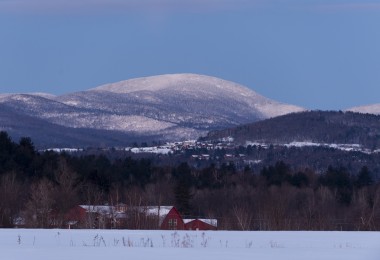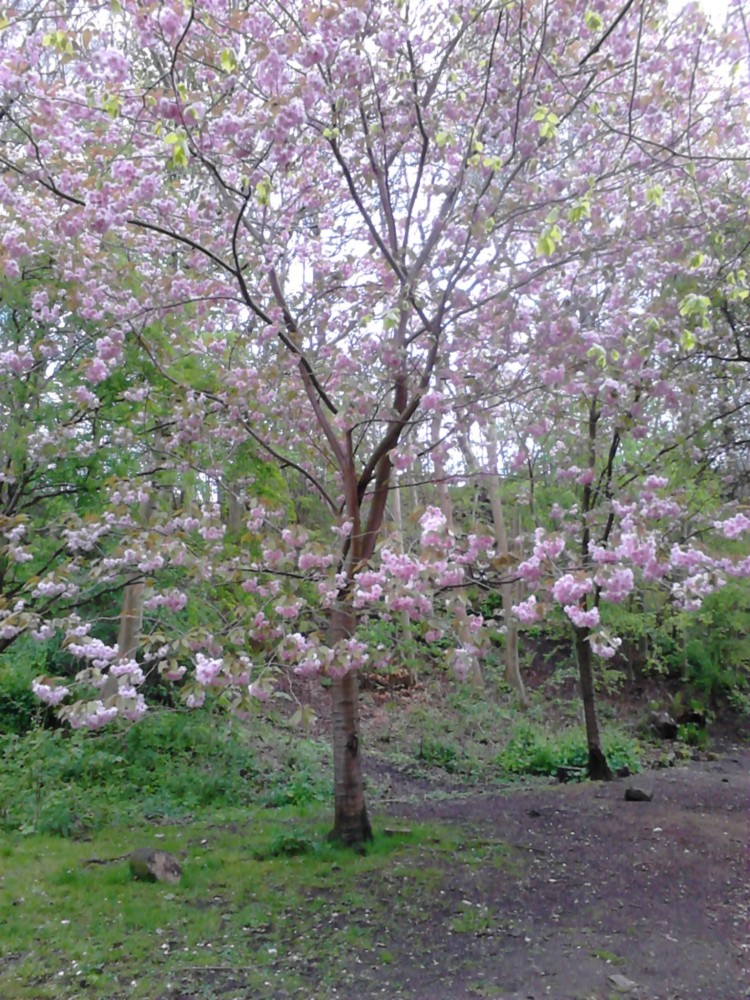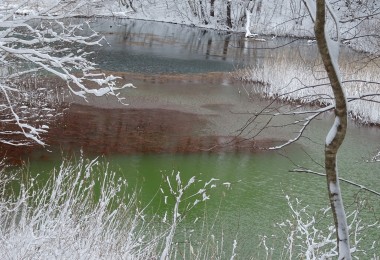The credit union sign reads 8:56pm and 11 degrees Fahrenheit in Vernal, Utah. We’ve just vomited the contents of my Toyota 4Runner into the bank’s parking lot to put finishing touches on our backcountry packs and sleds under the streetlights of civilization. In a few moments, we’ll point the truck north and chug up the switchbacks of Highway 191, the two-lane road that traverses the Uinta Mountains’ eastern half. We buzz, bee-like, as we putter in the frigid night, powered by Taco Bell burritos and a moderate concern about how cold it could be up high.
“For an old girl, this truck’s got giddy-up,” Matt says from the backseat as we drive uphill. My eyes flash to the odometer, which flipped through its 200,000th mile on this evening’s drive, and back to the road as I smile. I pat the steering wheel and press the gas pedal just a bit as Beth adds, “I say we all do.”
The trailhead is pitch black and empty when we arrive. I put the car in park and we sit with the doors shut tight, afraid of what temperature we might find outside. Danni opens a car door and unfolds herself first, which is appropriate. She’s in training for a 100-mile running race across Alaska’s wintertime tundra. If there’s anyone who should be ready for cold, it is she. “It’s an inversion! It’s warm!” she shouts. Danni’s a jokester in general, so I don’t believe her until I feel the night air for myself.
We are four people, a combination of skiers and snowshoers, and one dog, a 25-pounder named Andy, setting out into the mountains at 10pm. Our destination is five miles out, a cabin managed by the Ashley National Forest called the Colton Guard Station. The forest service ranger with whom I spoke on the phone earlier this week expressed concern when I said we weren’t coming until after work on Friday evening. We’re a mix of burly backcountry enthusiasts and ultrarunners, though, a pretty able and tenacious group. I, thus, possess confidence that, even though it’s dark and we’ve not traveled this route before, we’ll get to the cabin soon enough.

The route is marked well in some places and not at all in others. Where the trail markers disappear, we navigate by map, the light of a three-quarter moon, and educated guesses. We experience two or three moments wherein we aren’t certain if we’re going the right way. In fact, we’re never positive until we catch a glimpse of the cabin’s profile. No matter, we remain warm, fueled by fast food, and eager in spirit as we roll down the last hill and into the cabin’s front yard at 12:30 a.m.
One of us stokes the cabin’s wood stove, another of us makes bed assignments, and still another prepares the group a midnight snack. We giggle over our adventurous evening, inhale a few hundred replenishing calories, and lapse into eight hours of welcome sleep. In the wee hours of the night, something squirms against my body, waking me. It takes me a moment to identify myself, my surroundings, and this hairy mass as Andy the dog. He’s cold and seeking a snuggle buddy, and the little guy noses his way into my zipped sleeping bag. We spend the rest of the night this way, he the teaspoon and me the tablespoon.
By morning, we take stock of the Colton Guard Station and the slew of old buildings surrounding it. Built in 1933 by the Civilian Conservation Corps, the cabin was used for decades as a field home and office by US Forest Service rangers who patrolled the Uinta Mountains. We find a barn, which housed those rangers’ stock, as well as a few other storage-like outbuildings. An old wooden bridge spans a tiny creek and leads to a modern outhouse built for nowadays recreationists like us.
A leisurely breakfast in the cabin precedes an off trail snowshoe hike atop the hills above the cabin. The landscape is not at all what I expected to find at 8,000 feet. For several miles in every direction from the cabin, it’s wide open and almost void of vegetation, save for the nubbin tops of sagebrush occasionally poking out of the deep snow. The hills are sheets of almost unbroken white.

Folks have been here before us, and recently, too. Hashmarked snowmobile tracks scratch through the snow of most of these hillsides. Off road snowmobile travel is prohibited in this portion of the Uinta Mountains, so these tracks mark illegal snow travel benders. I am no forest service ranger, but I am overnighting at their old guard station. I am also a wilderness lover who possesses a fierce protective instinct about it. For these reasons, the snowmobile tracks make me red-faced mad.
Life does go on and so does our vacation. We spend two nights at this wilderness cabin, each day enjoying multiple gallivants either by snowshoes or skis. We eat like kings and queens, with even cabin-made chocolate mousse on one night’s menu! We giggle wildly when Andy tires after days of playing in the snow. We witness a sunset reflected on waves of high clouds that renders even chatty me speechless. We hurtle snowballs at one another in sneak attacks that devolve into full-on winter wars.
On our last day, we pack our packs and sleds, now light and almost empty from a weekend of food feasting, and begin our trailhead journey. We snowshoe and ski for those five returning miles along crisscrossing snowmobile tracks, those that went unseen under the cover of that first night’s darkness. One fact is clear: the snowmobilers treat this wild place with little of the respect I think it deserves.
As we move, I ponder why I’m incited into this emotional reaction. My reaction is akin to a mother moving in defense of a child she adores. It occurs to me that the human species is usually compelled to protect that which it loves. I realize that, in just three days, I’ve discovered some love for this place.

At the trailhead, we effort to set up a camera atop a fencepost for a group photograph. After a couple awkward misses that include the camera and a couple of us toppling into the snow, we get a perfect shot. The photograph is this: four people with goofy smiles, one little dog running into the picture’s edge, and a pile of gear. Even more, the picture is laden with giddiness and guardianship for the Uinta Mountains.
Photo 1: From left to right, Beth Vukin, Danni Coffman, and Matt Vukin enjoy a bluebird day in the Uinta Mountains (author photo).
Photo 2: The author is giddy about an untouched blanket of snow (photo by Matt Vukin).
Photo 3: Danni and the author snowshoe up a hill above the Colton Guard Station (photo by Matt Vukin).
Photo 4: Dormant aspen trees add a swath of color to the winter landscape of the eastern Uinta Mountains (photo by Matt Vukin).






